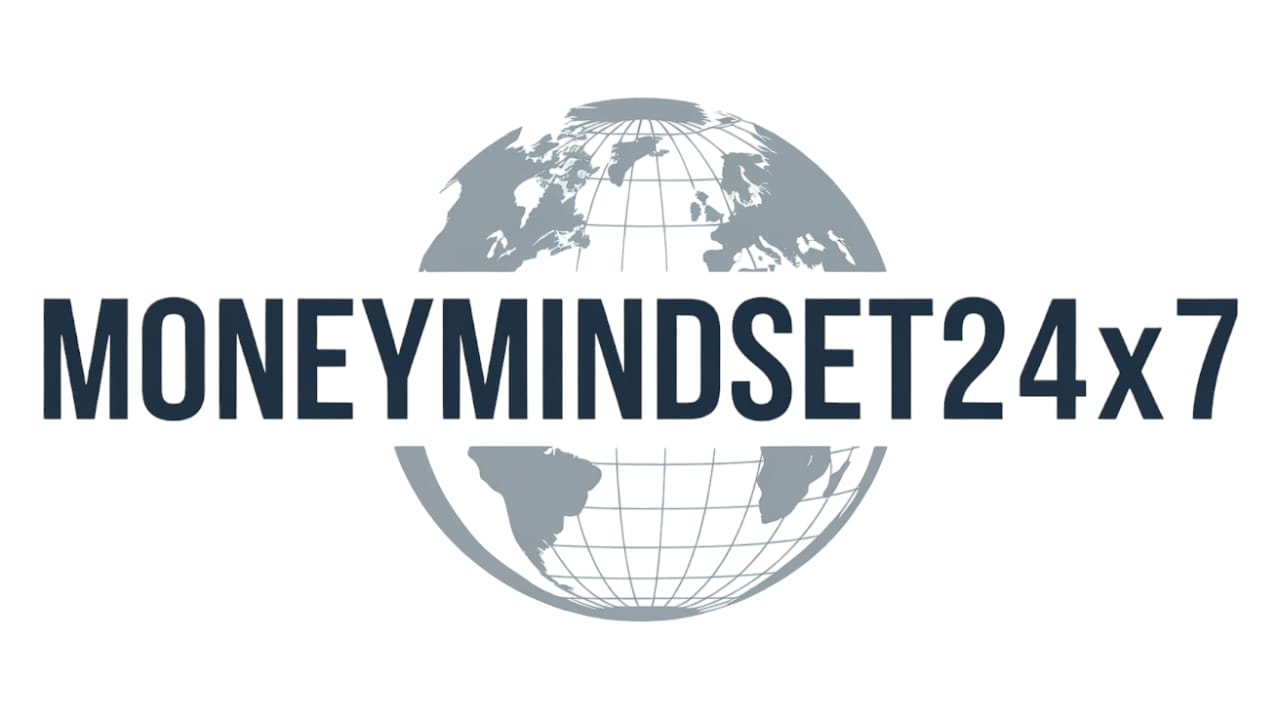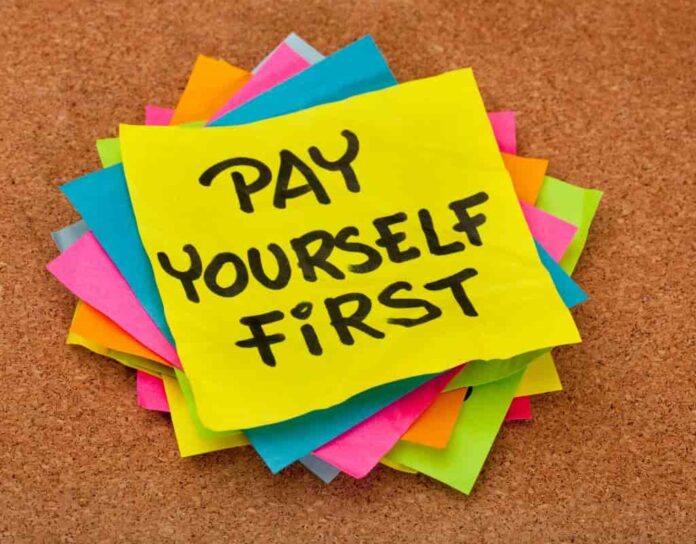If you ask me, “What’s the one financial habit that transformed your life?” I won’t hesitate even for a second. The answer is simple:
👉 Paying myself first.
It may sound cliché, but this single habit changed not just how I manage money but also how I view life, time, freedom, and future security.
In this essay, I’ll walk you through what this habit means, how I applied it practically, and how you can too. I’ll also share a couple of real-life examples to prove how powerful this concept is.
🌱 What Does “Pay Yourself First” Really Mean?
“Paying yourself first” means setting aside a fixed percentage of your income for saving and investing before you spend a single rupee on anything else.
It’s not about saving what’s left.
It’s about saving before spending.
Imagine this:
If you earn ₹50,000/month and decide to pay yourself 10%, you automatically transfer ₹5,000 to your investment or savings account right after salary hits. The remaining ₹45,000 is your budget for living.
Simple. Disciplined. Powerful.
🔄 How I Applied This Habit in Real Life
In my early 20s, like most people, I earned just enough to get by. But I made a decision early on:
📌 I would save 30% of every income, no matter what.
Here’s how I made it work:
-
I set up an auto-debit SIP for mutual funds on the 2nd of every month (just after salary credit).
-
I kept my lifestyle frugal. I still lived like a student shared flat, public transport, and home-cooked meals.
-
I built an emergency fund first (6 months of expenses).
-
Later, I diversified into equity mutual funds, gold, and even PPF for stable long-term compounding.
Today, that small decision has turned into:
-
A solid investment portfolio, compounding quietly in the background.
-
Zero debt.
-
More confidence and freedom to explore new opportunities, take calculated risks, and never feel trapped by money.
💡 Real-Life Example: How It Helped a Friend
One of my friends, Rohit, used to spend his entire salary every month. Great phone, flashy clothes, party every weekend.
At 30, he had no investments. Not even ₹10,000 in savings.
Meanwhile, another friend, Aarti, who earned the same salary, had been paying herself first since age 25.
By 30:
-
Aarti had ₹12 lakhs in investments.
-
Rohit had maxed out two credit cards.
The difference? Just one habit.
🧠 Why This Habit Works (Even Psychologically)
-
It creates scarcity by design: You don’t miss what you don’t see. Once your investments are automated, you train your brain to live on what’s left.
-
It builds financial momentum: You start small—maybe 10%—and then increase to 20%, 30%, or more as your income grows.
-
It reduces money stress: Knowing that your future is taken care of gives peace of mind, even if emergencies pop up.
🚀 How to Start Paying Yourself First (Step-by-Step)
-
Track your income: Know your monthly cash flow.
-
Decide on a percentage: Start with just 10% if that’s all you can manage.
-
Automate it: Set up auto-transfer to a savings/investment account.
-
Live below your means: Don’t upgrade lifestyle just because income increases.
-
Increase gradually: Every time you get a raise, increase the percentage you save.
🔁 Bonus Tip: Combine It with Purpose
Don’t just save for the sake of saving. Attach each goal to a purpose:
-
Retirement at 50? Automate SIPs accordingly.
-
Buy a home in 5 years? Create a separate mutual fund or RD for it.
-
Want to travel the world? Build a Travel Fund.
Money saved with a purpose is money that stays and grows.
🌟 Final Thoughts:
If you’re looking for a financial habit that truly transforms lives, I can vouch for this one: Pay Yourself First.
It’s not about being rich; it’s about being in control.
In a world where everyone is chasing shiny investments, risky bets, and crypto pumps, be the one who focuses on habits over hype.
Because it’s not the market that makes you rich—
It’s your behavior.
💬 What about you?
What’s one financial habit you’ve picked up that made a difference in your life?
Let’s inspire each other. Drop it in the comments 👇
Other Article – Your First Paycheck Isn’t Just Money. It’s the Start of Your Money Story
FIRE: How Youngsters Can Achieve FIRE Smoothly
1. What does “pay yourself first” actually mean?
Answer:
It means setting aside a portion of your income for savings or investments before you spend on anything else. It ensures your future self is prioritized over current consumption.
2. How much should I pay myself first?
Answer:
Start with 10% of your monthly income if you’re new to saving. Over time, aim for 20–30% as your financial discipline improves. The exact number depends on your income, expenses, and goals.
3. What if I don’t earn enough to save first?
Answer:
Start small—even ₹500/month is better than nothing. It’s not about the amount; it’s about building the habit. As your income grows or expenses are reduced, increase your saving percentage.
4. Where should I invest the money I save first?
Answer:
Initially, build an emergency fund (in a high-interest savings account or liquid fund). Once that’s done, begin investing in:
-
SIPs in mutual funds (equity for long term)
-
Public Provident Fund (PPF)
-
Index funds
Choose based on your goals and risk appetite.
5. Is paying yourself first more important than paying off debt?
Answer:
If it’s high-interest debt (like credit cards), tackle that first aggressively. But even then, try to save a small amount to build the habit. Once debt is cleared, ramp up your savings aggressively.
6. Can automation really help?
Answer:
Yes! Automating your savings via auto-debit or SIP ensures discipline. It removes emotion and temptation from the process and makes saving a default action.
7. Does this habit work for freelancers or irregular income earners?
Answer:
Absolutely. The percentage might vary each month, but the principle remains: Save a portion of every payment you receive. You may use a rule like “Save 30% of every invoice paid.”
8. Is it ever too late to start paying yourself first?
Answer:
No, it’s never too late. Starting late is still better than never starting. Even if you’re 40 or 50, saving and investing consistently can still build a meaningful corpus over time.
9. Should I still pay myself first if I have EMIs and rent?
Answer:
Yes. Consider your “pay-yourself” amount as a non-negotiable bill, just like your rent or EMI. If needed, reduce discretionary spending (like eating out, subscriptions) instead of skipping savings.
10. What are the biggest mistakes people make with this habit?
Answer:
-
Delaying or skipping savings when expenses feel tight
-
Not automating investments
-
Saving without clear goals (which leads to withdrawal and misuse)
-
Saving in low-interest options only (like regular savings account)


